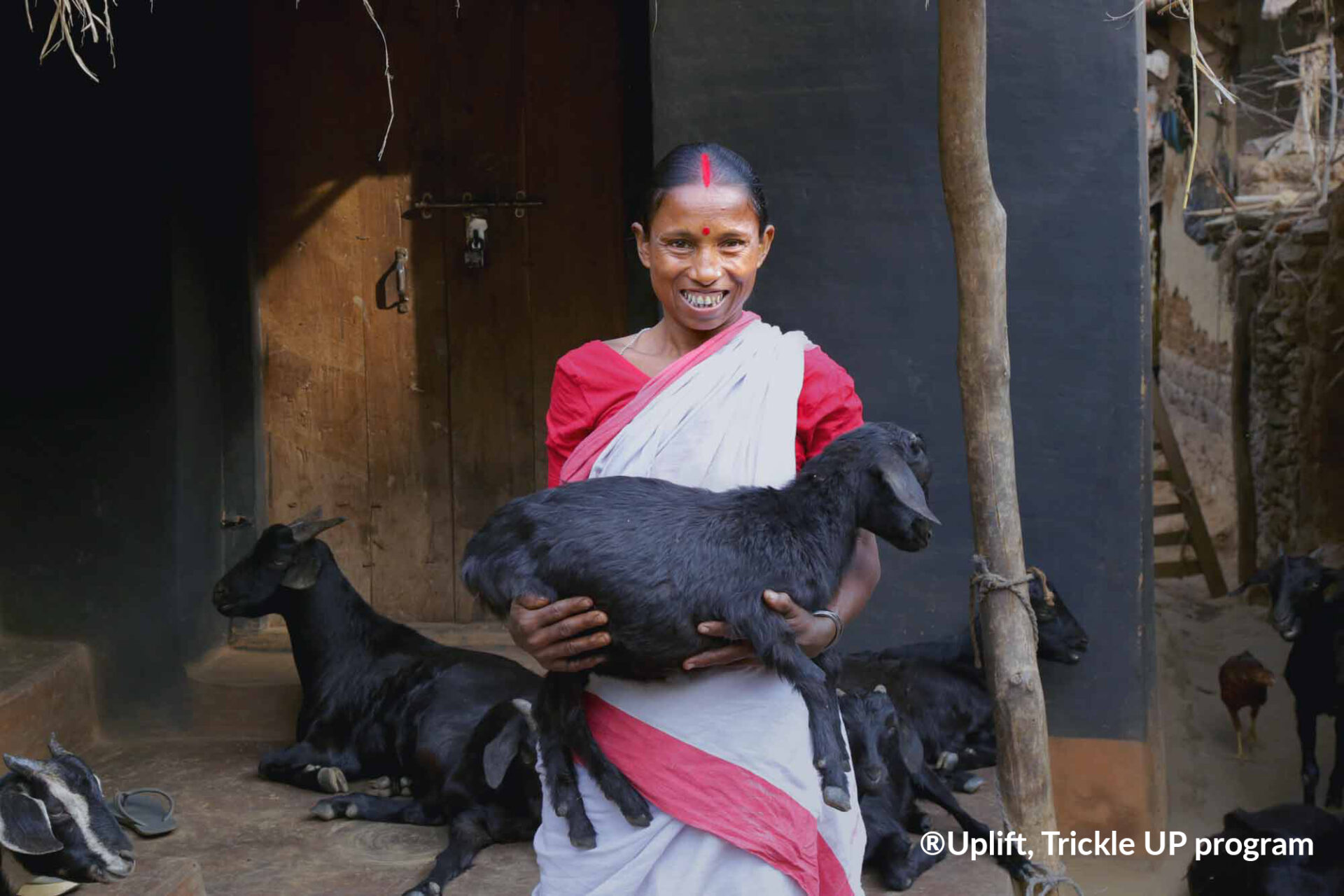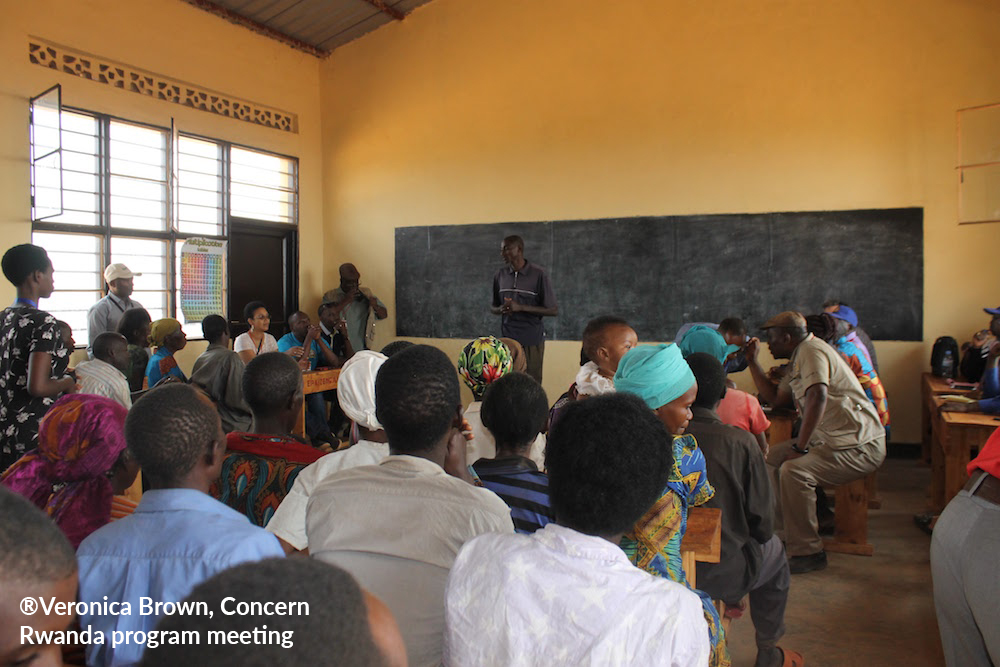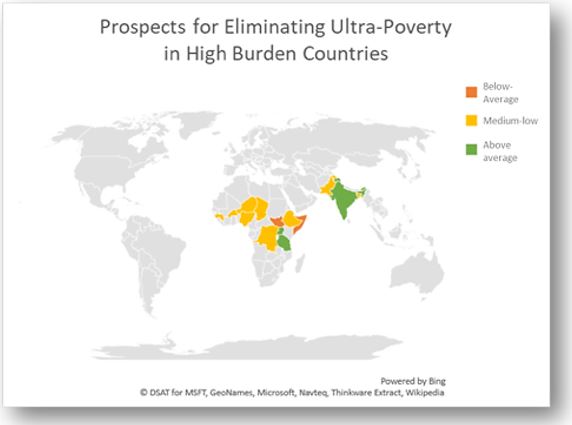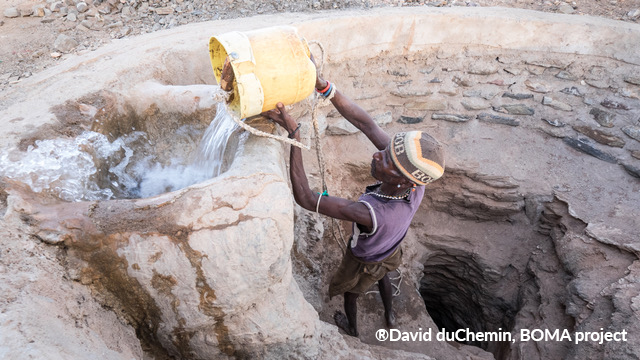There is No Time to Spare
In 2015, 193 countries, together with the World Bank and the United Nations (UN), committed to one of the most ambitious goals in human history: “By 2030, nobody will live in extreme poverty, anywhere in the world.” Audacious as this objective may seem, it is imperative that we achieve it for our collective well-being and continued global progress. As Nelson Mandela observed:
“(o)vercoming poverty is not a gesture of charity. It is an act of justice. It is the protection of a fundamental human right; the right to dignity and a decent life. While poverty persists, there is no true freedom.”
While there has been a great deal of progress over the last 40 years towards this goal, the harsh reality remains that we are in grave danger of missing the 2030 target unless the global community acts immediately and urgently to prioritize reaching those living in the most severe forms of deprivation on the planet– what is termed “ultra-poverty.”
 This is the shared mission of Uplift and our partner in this effort, the RESULTS Educational Fund, and to this end we are very excited to unveil the inaugural Global State of Ultra Poverty (GSUP). The GSUP provides the first-ever analysis exclusively devoted to ultra-poverty – defining what it is, where it is concentrated, prospects for eliminating it in specific geographies, and the most promising multi-sector actions to end it.
This is the shared mission of Uplift and our partner in this effort, the RESULTS Educational Fund, and to this end we are very excited to unveil the inaugural Global State of Ultra Poverty (GSUP). The GSUP provides the first-ever analysis exclusively devoted to ultra-poverty – defining what it is, where it is concentrated, prospects for eliminating it in specific geographies, and the most promising multi-sector actions to end it.
You might be asking yourself, why must we call out ultra-poverty specifically within the larger movement to end extreme poverty? The simplest answer is that if we don’t, we risk allowing development efforts to continue to overlook the 394 million people who today are living in the uniquely challenging and severe conditions of ultra-poverty.
Indeed, much of the progress that has been made towards eradicating global poverty in the last few decades has come primarily from lifting those closest to the extreme poverty line (set by the World Bank at US$1.90), primarily in India and China. Those who live in ultra-poverty, in contrast, tend to live farthest from that line. They face a unique degree of social and economic isolation that keeps them excluded from existing government and market-based poverty-eradication efforts and they are perennially left out of the progress towards ending poverty.
But there is also a human dimension and moral imperative to prioritizing reaching those living in ultra-poverty because these deprivations are so unconscionably severe. The pernicious conditions of ultra-poverty were captured viscerally by Sir Fazle Abed, the founder of the highly-esteemed global NGO (and Uplift partner) BRAC:
“The face of ultra-poverty is a woman, with children. She has domestic work or very low paid agricultural work and doesn’t get paid properly, receiving only food for her work. She shares her food with her children, so she’s half fed, and they are half fed. She can never build up a surplus or send her children to school, so at age seven or eight she farms her children out to work as domestics in other homes. She also loses most of her kinship relationships because her family wants to avoid her. She’s in a trap and doesn’t know what to do.”
 The GSUP was borne out of our sense of urgency and our unwillingness to tolerate these conditions. We recognized that there were essential information and data gaps hindering efforts to scale up, adapt, and innovate interventions that can work to end ultra-poverty, and that these same gaps were impeding effective advocacy and accountability.
The GSUP was borne out of our sense of urgency and our unwillingness to tolerate these conditions. We recognized that there were essential information and data gaps hindering efforts to scale up, adapt, and innovate interventions that can work to end ultra-poverty, and that these same gaps were impeding effective advocacy and accountability.
The GSUP attempts for the first time to fill these gaps and create this framework. It has been developed as a public good for stakeholders across sectors to help inform data-backed advocacy and implementation, resource mobilization and allocation, and ongoing insight and analysis from the front lines of innovation and scale-up.
Crucially, the GSUP provides for the first time: (1) a concrete and multi-dimensional definition of the deprivations that constitute ultra-poverty; (2) a global picture of where ultra-poverty is concentrated; (3) identification of those countries with the best and worst prospects for ending ultra-poverty; and (4) recommendations for the most promising multi-sector actions that will be required to end it. Additionally, the GSUP platform provides a unique interactive index of the 56 countries where 1% or more of the population face ultra-poverty, an in-depth report and expert insights examining current evidence-backed interventions, and specific calls to action for the global community.
Key Findings & Recommendations
In this inaugural GSUP analysis some critical key findings and multi-sector recommendations have emerged, some of which are highlighted below:
- Just 14 countries contain 80% of those living in ultra-poverty (see table and map below of High Burden Countries and their prospects for ending ultra-poverty

- Yet these same 14 countries receive merely 20% of official development assistance (see also below a table outlining ultra-poverty and donor country priorities).

Based on the data and analysis, the GSUP also call for the following multi-sector actions that are crucial for success:
The 14 countries with a high burden of ultra-poverty must specifically identify those that comprise this population and develop new – or amend existing – national-level plans to address their needs;
Donor countries and bilateral agencies must prioritize funding for countries with the highest burden of ultra-poverty;
The World Bank must specifically address ultra-poverty within country strategies and proactively encourage countries to seek World Bank financing for programs to reach persons in the deepest poverty;
Philanthropists must support pilots, innovations, and scale-ups of evidence-backed interventions for the ultra-poor, with emphasis on the 14 high-burden countries identified in this report;
Investors must provide investment capital for the implementation of innovations such as impact bonds to accelerate the scaling of ultra-poverty programming, with special prioritization on the 14 high-burden countries identified in this report;
While we recognize that the challenge presented by almost 400 million people living in ultra-poverty can seem overwhelming, the GSUP findings offers reasons for hope that with urgent and concerted action, we can indeed defeat this challenge.
 First, given that 80% of those living in ultra-poverty are found in just 14 countries, targeted intervention and resource re-allocation to those 14 countries can yield very significant impact and movement towards ending ultra-poverty.
First, given that 80% of those living in ultra-poverty are found in just 14 countries, targeted intervention and resource re-allocation to those 14 countries can yield very significant impact and movement towards ending ultra-poverty.
Second, we have evidence-based and proven approaches that have worked to get people out of ultra-poverty. For example, the Graduation approach, pioneered by BRAC, has proven its ability to reach those living in ultra-poverty with a holistic approach and successfully empower them to make their way out of ultra-poverty, with resilience, over a sustained period. This approach is currently being adapted, innovated and scaled across many pilots and many countries, and with additional investment and government adoption, reaching the ultra-poor is entirely feasible.
Additional approaches such as government cash transfers are also currently being tested in ultra-poor communities, though the evidence is not yet sufficient to demonstrate success for the ultra-poor specifically. However, targeted investment in continued adaptation, testing and innovation can help identify efficiencies in both methodology and delivery that can accelerate progress for ending ultra-poverty.
We urge you to explore the GSUP platform and to read our full report, explore the index, and the insights on the GSUP and then to join us on our campaign this month to #EndUltraPoverty. You can do that by driving your communities to the GSUP via your communications channels, disseminating its findings, and aligning your organization with the multi-sector calls to action the GSUP identifies.
As the GSUP notes:
“[f]or the first time in human history, we stand within sight of ending the worst forms of suffering on the planet. That we must do so is therefore not just a matter of collective economic and social progress, it is our shared moral imperative.”